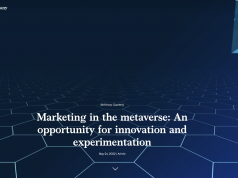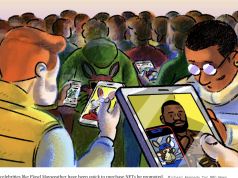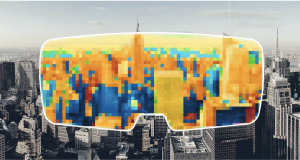March 28, 2022
| Wronger than Wrong Science is the process of proving things wrong. So when the physicist Wolfgang Pauli was presented a paper with a hypothesis too general to be falsifiable — and therefore useless to the cause of science — it received his harshest judgment: He dismissed it as “not even wrong.” I often feel that way when reading about Web3. The promise of Web3 always sounds great. But the descriptions and claims tend to be so wooly and unspecific as to be useless. “Successor to the internet…A system for decentralized trust…The future of identity…Read/write/own.” None of these are wrong, but only because they are unfalsifiable. Which makes them wronger than wrong. So what is Web3? I’m still not entirely sure. But the more useful question may be: What can you do in Web3? And, so far, the answer is…you can DeFi. The Way We Were Crypto enthusiasts often cite a chart overlaying the pace of crypto adoption to that of internet adoption. And I do think it’s a good one: |
 But being a bit older than the average crypto enthusiast (OK, fine, a lot older), I have a different take on that infographic. But being a bit older than the average crypto enthusiast (OK, fine, a lot older), I have a different take on that infographic. Most present it as evidence that crypto is well on its way to becoming as pervasive as the internet: The chart implies that crypto is currently where the internet was in 1998. But having been old enough to operate a dial-up modem in 1998, I can tell you that crypto today does not feel anything like the internet then. For those of you who are either too young to know or too old to remember, here’s what life was like in the Web2 world of 1998:Using email at work was increasingly the norm.AOL had 30 million customers paying for email at home.Yahoo! was getting 100 million pageviews a day.Most people had bought books or CDs on Amazon.Lots of people bought beanie babies and yard-sale finds on eBay.Some people were meeting their soulmates on Match.com.Everyone was printing out driving directions from MapQuest.Many were self-medicating with advice from WebMD.Facts and knowing stuff was being outsourced to AskJeeves.Internet usage was common and well on its way to pervasive. And none of it took any special technical skills or know-how. Most importantly: except for social media, every major aspect of Web2 was already in evidence. And what does Web3 look like in 2022?Metamask has 30 million monthly active users.DeFi TVL is $220 billion.Over 2 million NFTs traded on OpenSea in February.It’s a shorter list. The path to pervasiveness is less clear. And far more technical know-how is required to participate. So you could argue that the chart is misleading: It’s not 1998 in crypto, it’s only, say, 1993. And that, too, would be a perfectly unfalsifiable thesis. But here’s my unfalsifiable thesis: We really are in 1998 — all the hype, non-stop token listings and fire hose of VC money certainly makes it feel that way. My takeaway is therefore that whatever Web3 is going to be, we’re already doing some form of nearly all of it right now. And what we’re doing right now is DeFi. You could argue that GameFi belongs on that Web3 list, but I’d counter that crypto gaming is (so far) just gamified DeFi. And you may want to add the Metaverse: I’d argue the Metaverse is to Web3 what social media was to Web2: The last, truly original, phase of development. But as for what’s happening now — currencies, tokens, NFTs — it’s all ownership related. And all ownership is finance related. Have a Look Around In the 1990s, we imagined the internet would be traditional media, but on computer screens. But by 1998, you could look around and see that Web2 would be much more than that. Now we imagine Web3 will be Web2, but decentralized. But there’s not much evidence of that so far. (Where’s my decentralized Twitter?) Instead, to see into the future of Web3, just have a look around at what’s already happening. What’s happening is DeFi. Which means Web3 is DeFi. Think I’m wronger than wrong? Tell me why: Byron@blockworks.co.— Byron Gilliam |









